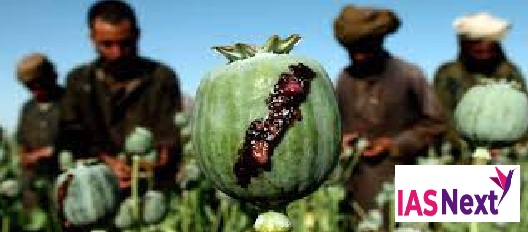CURRENT AFFAIRS
Get the most updated and recent current affair content on Padhaikaro.com
Drug trafficking in Afghanistan
- IAS NEXT, Lucknow
- 01, Dec 2021

Reference News:
Drugs have been a major source of revenue for the Taliban. With the collapse of Afghanistan’s economy, the Taliban will rely heavily on drug money to maintain control over their cadres.
According to the latest World Drug Report of the United Nations Office on Drugs and Crime:
- Afghanistan reported a 37% increase in the extent of land used for illicit cultivation of opium poppy during 2020 compared with the previous year.
- The country accounted for 85% of the global opium production last year.
- Despite the improved capabilities of the Afghan specialised units over the years, drug seizures and arrests had minimal impact on the opium-poppy cultivation.
- Afghanistan is also turning out to be a major source for methamphetamine.
World Drug Report 2021:
- Around 275 million people used drugs globally in the last year. Over 36 million people suffered from drug use disorders.
- Rise in the use of cannabis during the pandemic has been reported by most countries.
- Non-medical use of pharmaceutical drugs has also been observed in the same period.
- The latest global estimates say, about 5.5 per cent of the population between 15 and 64 years have used drugs at least once in the past year.
- Over 11 million people globally are estimated to inject drugs – half of them have Hepatitis C.
- Opioids continue to account for the largest burden of disease-linked to drug abuse.
Indian Government has taken several policy and other initiatives to deal with drug trafficking problem:
- The or a ‘Drugs-Free India Campaign’ was flagged off on 15th August 2020 across 272 districts of the country found to be most vulnerable based on the data available from various sources.
- Ministry of Social Justice & Empowerment has begun implementation of a National Action Plan for Drug Demand Reduction (NAPDDR) for 2018-2025.
- The government has constituted Narco-Coordination Centre (NCORD) in November, 2016.
- The government has constituted a fund called “National Fund for Control of Drug Abuse” to meet the expenditure incurred in connection with combating illicit traffic in Narcotic Drugs; rehabilitating addicts, and educating public against drug abuse, etc.